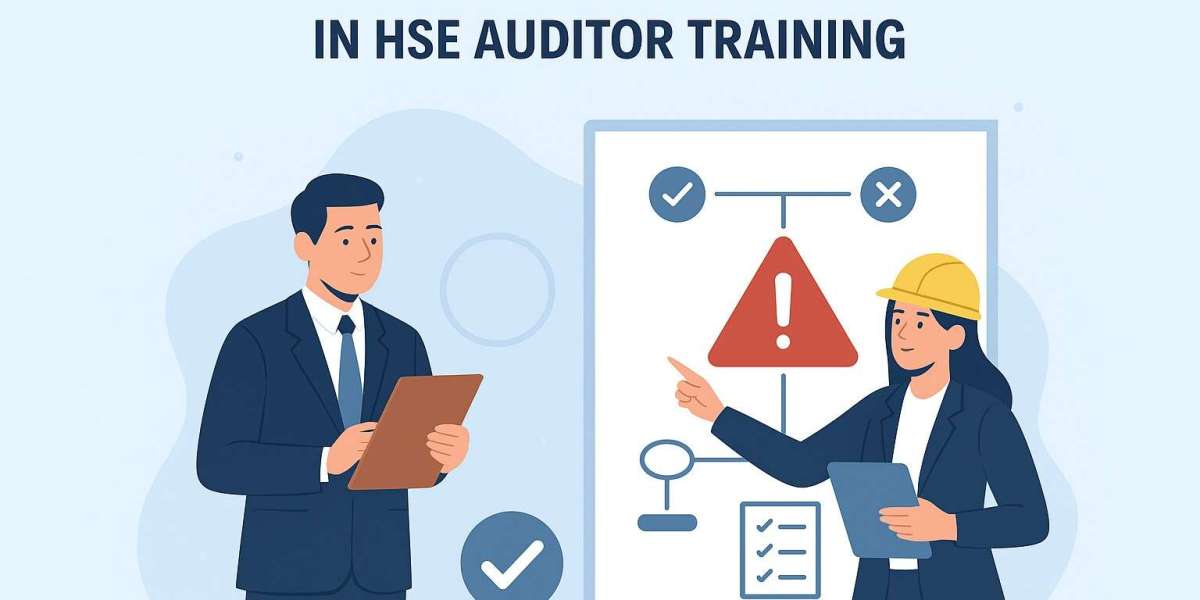Health, Safety, and Environment (HSE) auditor training plays a critical role in equipping professionals with the knowledge and skills to evaluate and improve workplace safety standards. Among the various elements of this training, risk assessment techniques stand out as one of the most vital. Effective risk assessment is the foundation of a strong safety management system, enabling organizations to identify hazards, evaluate risks, and implement control measures to protect workers, the environment, and business continuity.
This article explores the importance of risk assessment techniques within HSE auditor training, the methodologies auditors learn, and how these approaches contribute to safer and more compliant workplaces.
Understanding the Importance of Risk Assessment in HSE Auditing
Risk assessment is a systematic process of identifying potential hazards, analysing their likelihood and severity, and determining appropriate measures to control or eliminate them. For HSE auditors, mastering this process is essential because it allows them to evaluate whether an organization is managing risks effectively in line with legal requirements, industry standards, and best practices.
Without proper risk assessment techniques, audits would remain superficial and fail to uncover underlying vulnerabilities that could lead to accidents, injuries, environmental damage, or regulatory penalties. Therefore, HSE auditor training emphasizes not only compliance auditing but also the ability to perform detailed, structured risk assessments.
Key Risk Assessment Techniques Covered in HSE Auditor Training
During HSE auditor training, participants are exposed to a variety of risk assessment techniques designed to address different workplace scenarios. Some of the most widely taught methods include:
- Qualitative Risk Assessment
This technique uses descriptive scales such as “low,” “medium,” or “high” to evaluate the severity and likelihood of risks. Auditors are trained to apply this method when quantitative data is limited, relying instead on professional judgment, historical trends, and expert interviews.
- Quantitative Risk Assessment
In contrast, quantitative methods involve numerical data and calculations, such as frequency rates, probability distributions, or financial impact estimations. HSE auditor training ensures auditors know how to apply quantitative techniques to assess complex risks in high-hazard industries like oil and gas or chemical manufacturing.
- Job Safety Analysis (JSA)
A JSA, also known as Job Hazard Analysis (JHA), breaks down tasks into individual steps, identifies hazards associated with each step, and recommends controls. Auditors learn to evaluate whether organizations conduct JSAs effectively and whether they are integrated into day-to-day operations.
- Hazard and Operability Study (HAZOP)
This structured technique is widely used in process industries. It involves systematically examining processes to identify deviations that could lead to hazards. HSE online auditor training provides auditors with insights into how HAZOP reviews are conducted and how to evaluate their effectiveness during an audit.
- Failure Mode and Effects Analysis (FMEA)
FMEA is a proactive approach where auditors assess potential failure points in systems, their effects, and the likelihood of occurrence. Training enables auditors to identify whether an organization has robust systems to anticipate and mitigate equipment or process failures.
Role of Auditors in Applying Risk Assessment Techniques
In practice, HSE auditors do not just conduct audits but also assess whether an organization’s risk assessment processes are:
- Systematic and consistent across departments and activities.
- Compliant with legal and regulatory requirements.
- Integrated into management systems such as ISO 45001 (Occupational Health & Safety) and ISO 14001 (Environmental Management).
- Reviewed and updated regularly to reflect operational changes, new hazards, or incident learnings.
Training ensures auditors can ask the right questions, evaluate evidence critically, and verify that organizations apply risk assessment techniques effectively.
Benefits of Risk Assessment Techniques in HSE Auditor Training
Mastering risk assessment techniques provides several benefits for both auditors and organizations:
- Enhanced Audit Quality – Auditors deliver more accurate, thorough evaluations by applying structured risk assessment techniques.
- Proactive Hazard Identification – Training ensures risks are identified before they escalate into incidents.
- Improved Compliance – Organizations remain aligned with national and international standards.
- Strengthened Safety Culture – Effective risk assessments encourage employees to adopt safer work practices.
- Better Decision-Making – Risk-based auditing allows management to allocate resources more efficiently.
Conclusion
Risk assessment techniques form the backbone of effective HSE auditor training. By mastering qualitative and quantitative approaches such as JSA, HAZOP and FMEA, auditors gain the ability to evaluate workplace hazards systematically and ensure that organizations are implementing adequate control measures. This not only improves audit quality but also helps build safer workplaces, reduce accidents, and foster a culture of continuous improvement.



